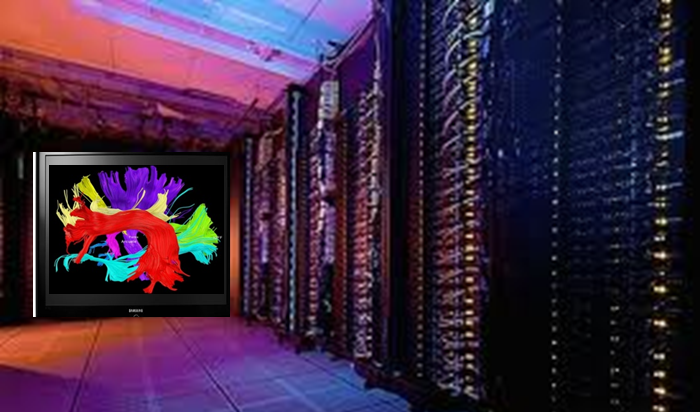Facilities
Computer Facilities
The Center has a network of about 30 Windows machines and a Linux computational cluster used primarily for fMRI and diffusion imaging data analysis. The cluster consists of a master node, 12 compute nodes and 2 fileserver nodes. The cluster components are connected with an InfiniBand network. All compute nodes utilize 2 CPUs (Xeon E5-2665 CPUs , 32 cores total) and 128 GB of memory. In addition, two of the compute nodes are equipped with NVIDIA Fermi GPU compute processors. Each of the fileserver nodes has 40 TB of usable disk space arranged in a hardware RAID6 array. These RAIDs are used for both "online" and "nearline" data storage, creating the capabilities for the disk-to-disk backup strategies. A separate Linux fileserver with about 40 TB of disk space serves as a backup server.

The Windows machines are used as desktop machines, as remote terminals for the cluster access, and for data acquisition (experiment running). They are networked in a Windows domain that also includes domain controllers, a file server, and a backup server. The experimental machines run the CogLab Experimental Control Program.
The internal CCBI network is 1 Gigabit/sec, providing excellent capabilities for data exchange, which is extremely useful for the interactive image processing.
Instrumentation
The Center employs a number of devices to present stimuli to and collect data from our participants, including an eyetracker, high-resolution display goggles, joystick, trackball, and response buttons.
The Virtual Reality display goggles (from Resonance Technology) can display high-resolution (XGA) computer images consisting of text, static images, or virtual reality graphics. The goggles contain an eye-tracking camera, making it possible to relate the fMRI data acquisition to the monitoring of the point of regard.
The trackball and joystick used in the Center's driving simulation studies are standard models that have been modified to fit our experimental designs and are fMRI compatible.
